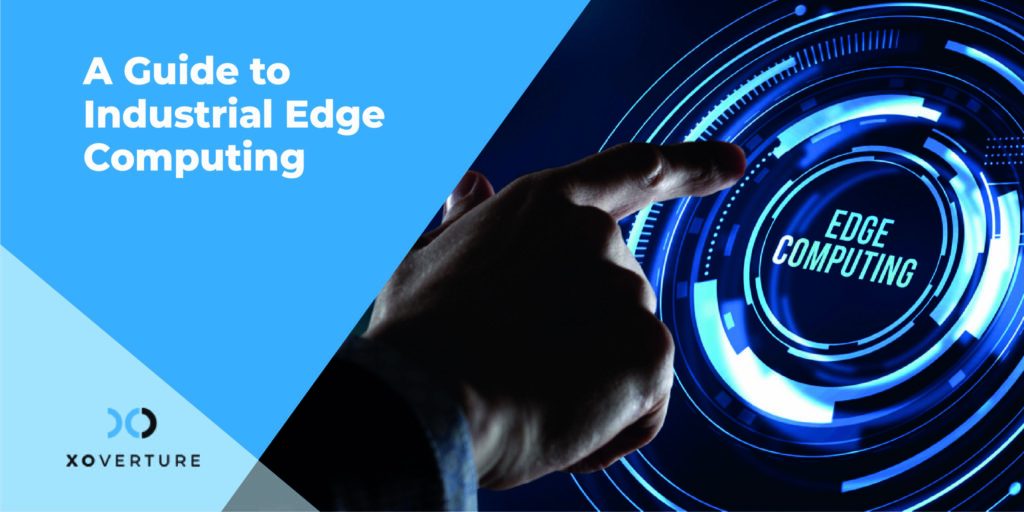The industrial sector is going through a major transformation which clearly shows the number of IoT devices and systems will be doubling in the upcoming few years. Therefore, It won’t be easy for edge computing to cope with Industry 4.0 changes and developments. Hence, the tech industry is picking up pace with its latest capabilities like condition-based monitoring, predictive maintenance, and remotely controlled vehicles to achieve exponential growth and success in the future.
In this blog, let’s delve deeper into the meaning of industrial edge computing, its benefits, and how the industry is going to continue to shape the way we process and analyze data.
What do you mean by Industrial Edge Computing?
Edge computing is a system model which helps computation take place at the data sources or immediately next to them. It happens with a noticeable difference to the basic approach of implementing the cloud at the data center which is the sole place for computing. It doesn’t mean the cloud will disappear, it is an indication that the cloud is approaching you.
Basically, the exact meaning of edge is the network edge where the device and system communicate with the internet or the local network that holds the communications of a device with the internet.
Edge computing helps provide better performance for online applications by ensuring processing nearly to the data source. The dictionary meaning of the word edge is in the context of geographical dispersion that eliminates the need for long-distance connections between both servers and clients, reducing latency and bandwidth consumption.
The Major Benefits of Edge Computing?
Enhanced Network Traffic
When you reduce the amount of data that you send over the network to the cloud, then it diminishes the bandwidth and expenses of transmitting and storing.
Better Reliability
Your network transmits a limited amount of data at once. With poor internet connectivity and location, you can store your vital data and process it. The edge provides better reliability when you have a disrupted cloud connection.
Condition-Based Maintenance
When edge computing is enabled with IoT systems and devices, they can identify abnormalities in equipment with CBM.
Cloud Security
The localized analytic form of edge computing helps diminish the number of data transfers sent between a centralized cloud & device which ensures your data is always secure in cloud storage.
Data Quality Control
Quality control is one of the essential terms that developers require at the time of integration in edge computing for their IoT systems & devices. Edge computing provides constant reliability in data quality in various situations like disturbed network connection and other internet issues.
Operations Optimization
As the name reflects, operation optimization helps optimize IoT devices and systems.
Storage Optimization
Generally, IoT devices & systems have a good amount of data and edge computing helps free up unwanted data to increase productivity by adding more efficient storage space. Edge computing helps organize and clean up storage that hogs your data space.
Enhanced speed & lower latency
Edge computing helps move data processing & analysis which is useful to improve the speed of device/system response time, and offer faster transactions and better experiences.
Enhanced Productivity
Edge computing comes in handy for enabling IoT systems and devices to offer increased uptime in business operations.
Sales Enablement
Edge computing helps provide real-time control over crucial and sensitive data that organizations find helpful for enabling improved sales.
Primary Motive of Edge Computing?
- Useful for handling traffic loads, and improving your organization’s services and app performance.
- The primary motive of edge computing is to move computation to the network’s edge, far from data centers.
- Edge computing helps handle companies’ challenges like business rules, compliance, privacy, and many more.
Some Examples of Edge Computing?
- Predictive Maintenance
- Management Systems
- Employee safety and security
- Medical Applications and Management
- Remote-controlled vehicles, electric automobile
- Charging stations
- Public transit systems
- Healthcare and medical applications
- Industrial process monitoring
In this digital era, the future of industrial edge computing is extremely high and bright. Let’s say with its computing integration, increased performance, and improved security, this industry can play an essential role in processing and analyzing data. With its advanced development, it seems like edge computing possibilities will be completely limitless.






